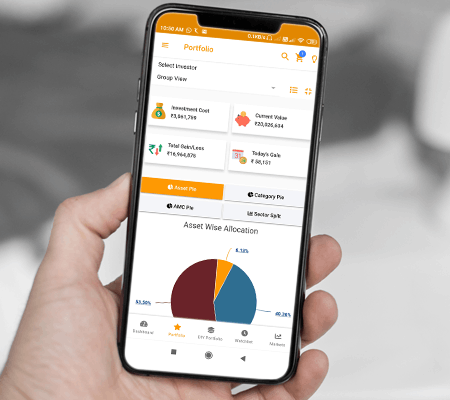Heading will come here
View Now- ICICI Prudential Advisor Series - Dynamic Accrual Plan 31.85 0.00(0.00%)
|
10,195.15 10.2600 (-3.3%) 16-03-2018 12:00 |
Prev Close 10,360.15 | Open 10,345.15 | High 10,346.30 | Low 10,180.25 | Details |
| NSE: Asian Paints | BSE: 500820 | Sector: Chemicals |
|
NSE Mar 16 2018, 4:01 1,160.80 23.90(+3.90%) |
BSE Mar 16 2018, 4:01 2,260.90 23.90(+3.90%) |
View Details |
Invest Guide November 2024
FAQs on SIP
A Systematic Investment Plan(SIP) is a disciplined and effective strategy to mutual fund investing allowing investors to contribute a set amount on a regular basis, usually monthly or quarterly. This method not only encourages saving habits but also gives investors the benefits of compounding and rupee cost averaging.
Here are some frequent SIP-related questions to help investors make educated decisions and successfully navigate their investment path :
-
How do SIPs work and what are the benefits of SIP investment?
Investors select a mutual fund plan and define their investment amount and frequency. The specified amount is automatically taken from their bank account and invested in the mutual fund. SIP investments offer the benefits of Rupee Cost Averaging (Buying more units when prices are low and fewer when prices are high), regular saving habits, flexibility of starting in small amounts and increasing contributions as financial situations improves. -
What is the minimum investment amount for a SIP?
The minimum amount to invest in a SIP varies by each mutual fund house, although it's typically as low as Rs 100. Few fund houses have a minimum of Rs 500 to start a SIP. -
What can I do if I skip an instalment or want to cancel my SIP?
If a payment is missed, the SIP will continue in the next month until the investor decides to discontinue it. To cancel a SIP, one can file a stop request to the respective mutual fund house. Once the cancel/ pause request has been initiated, it will take approximately 30 days to process the request. -
What is the lock-in period for SIP?
SIPs in mutual funds generally don't have a lock-in period and one can stop a SIP anytime. However, some specific funds, such as ELSS, may have a lock-in period of generally 3 years. -
How can I track my SIP investment?
Most mutual fund companies and distributors offer online access to track investments, and users can also use various financial applications or platforms to monitor performance. Know more about tracking fund performance at Systematic Investment Plan. -
How should You Invest in Mutual Fund - SIP or Lump sum?
SIP investments offer flexibility in making payments. Investment can be made in quarterly/monthly/weekly basis. You can invest through both SIP (Systematic Investment Plan) and lump-sum methods. SIP method allows investors to invest a fixed amount regularly (quarterly/monthly/weekly) while Lump sum payment involves making one-time large investment. -
Can I invest in multiple SIPs?
Yes, Investors have a choice to diversify portfolios and risk across different mutual fund schemes (both equity and debt based). While setting up SIP, investors should monitor their portfolio to ensure they align with financial goals. -
Can I change the amount of my SIP investment?
You can't increase or decrease the SIP amount when the SIP is in progress. Once set the amount you can't change it until completion. However, you can cancel the SIP and then start with new amount. -
Does SIP allow me to invest in all types of mutual funds?
SIPs can be used to invest in a wide variety of funds including equity, debt, hybrid, ELSS, Index and sectoral funds. Check out our latest thematic funds at our mutual fund explorer section at Mutual Funds Explorer. -
Can I redeem my SIP investments anytime?
Investors can redeem or withdraw a part of the investment anytime. However, one must consider the tax implications, lock-in period and exit load policies applicable to the fund.
































